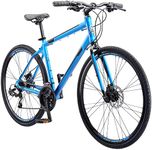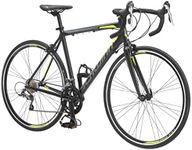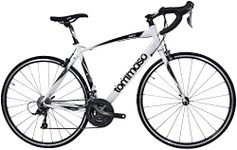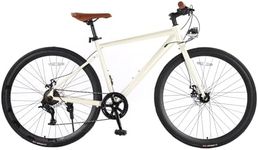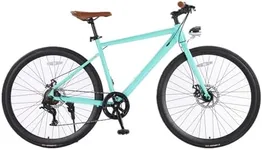Buying Guide for the Best Women's Road Bikes
Choosing the right women's road bike can be a rewarding experience, but it requires some careful consideration of your needs and preferences. Road bikes are designed for speed and efficiency on paved surfaces, making them ideal for fitness, commuting, and long-distance rides. To find the best fit for you, it's important to understand the key specifications and how they align with your riding goals and body type.Frame MaterialThe frame material of a road bike affects its weight, durability, and ride quality. Common materials include aluminum, carbon fiber, and steel. Aluminum frames are lightweight and affordable, making them a good choice for beginners. Carbon fiber frames are lighter and offer a smoother ride, ideal for competitive cyclists or those looking for high performance. Steel frames are durable and provide a comfortable ride, suitable for long-distance touring. Consider your riding style and how much weight and comfort matter to you when choosing the frame material.
Bike Fit and GeometryBike fit and geometry refer to the size and shape of the bike, which affect comfort and handling. Women's road bikes often have a shorter top tube and taller head tube to accommodate a shorter torso and longer legs. It's important to get a bike that fits your body measurements to avoid discomfort and injury. Many bike shops offer fitting services to help you find the right size. Test riding different models can also help you determine which geometry feels best for you.
GroupsetThe groupset includes the bike's gears, brakes, and shifters. Higher-end groupsets offer smoother shifting and better performance but come at a higher cost. Entry-level groupsets are sufficient for casual riders and beginners, while mid-range groupsets are suitable for more serious cyclists who ride frequently. High-end groupsets are best for competitive riders who need top performance. Consider how often you ride and the type of terrain you encounter to choose the appropriate groupset.
WheelsetThe wheelset affects the bike's speed, weight, and ride quality. Lighter wheels improve acceleration and climbing, while more robust wheels offer better durability for rough roads. Entry-level bikes typically come with heavier wheels, which are fine for casual riding. Upgrading to lighter, more aerodynamic wheels can enhance performance for more serious cyclists. Think about your riding goals and whether you prioritize speed or durability when selecting a wheelset.
HandlebarsHandlebars come in different shapes and sizes, affecting your riding position and comfort. Drop handlebars are common on road bikes, offering multiple hand positions and an aerodynamic riding stance. The width and drop of the handlebars should match your shoulder width and riding style. Narrower handlebars are more aerodynamic, while wider ones provide better control. Test different handlebar shapes and sizes to find what feels most comfortable for you.
SaddleThe saddle is crucial for comfort, especially on long rides. Women's saddles are designed to accommodate wider sit bones and provide better support. Saddles come in various shapes and padding levels, so it's important to try different options to find what suits you best. A saddle that feels comfortable during a short test ride may not be suitable for longer distances, so consider your typical ride duration when choosing a saddle.
Tire WidthTire width affects the bike's ride quality and handling. Narrow tires (23-25mm) are common on road bikes and offer less rolling resistance, making them faster on smooth surfaces. Wider tires (28-32mm) provide more comfort and better grip, especially on rough roads or gravel. If you prioritize speed and ride on well-paved roads, narrower tires are a good choice. For more comfort and versatility, especially if you encounter varied terrain, consider wider tires.

